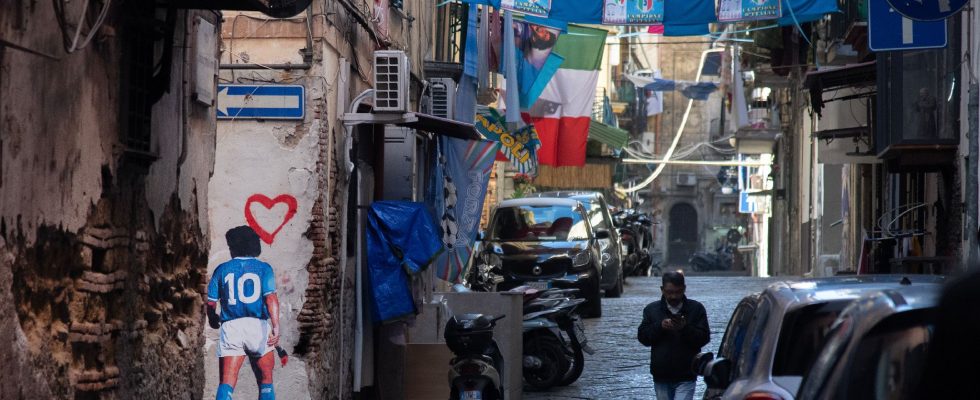What I love about Naples is the retrospective dread of never having known it. I’ve never seen you like this, says Dora, who only knew me in Mexico in a state of nostalgia (the pain of returning).
What I like in Naples is to be afraid of nothing, and at every street corner, to amaze myself: “Ma! è la città più bella del mondo!” Under the breath of Antiquity, palaces and hovels rub shoulders, the song of the Vespas has changed, but on their chubby cars, the young acrobats of the asphalt have the gallantries of old gentlemen, the Piaggio swing taking the place of politeness, they always stop in time. No red lights, no reserved lanes, not even priority, all the streets are pedestrian, and the sidewalks reserved for tightrope walkers. The mechanical workshops and the restoration of old frames are open to the street, which is also a wardrobe, and adorned with icons of Maradona. I go into raptures over anything and everything, euphoric, because everything is a masterpiece in this concert of embellished beauties, there are no more styles, eras, it’s the law of clandestine accumulations , strata of tricks, the harmony of chance, the fun of accidents, the elegance of chaos. Look at ! Look at !
What I love about Naples is the instant disintegration of all prejudices. I suspected it a little, but the day before our departure, when Marco told me “You’re going to be robbed”, I had confirmation. The taxi, the waiter, the hotel receptionist, the museum guard, you’ll have to get used to it, they’re nice, as if life were easier by being considerate, attentive. Never obsequious, that would be too much effort. As for the cops, there are none.
Capodimonte, the Louvre in Naples
On Corso Amedeo di Savoia, Dora asks the bus driver if he is going to Capodimonte. He goes there, but since we don’t have a ticket, he says “It doesn’t matter, get on”. And then he takes good care of us, telling us which station to get off at. Grazie thousand, thousand times repeated.
Capodimonte is the Louvre of Naples, but with a large park, which dominates the city. It has been run since 2015 by Frenchman Sylvain Bellenger, who first transformed the park, restoring it to its former glory, when King Charles VII hunted partridges. Forget the alley of Syringes, finished the crossroads of Condoms. The children are playing and the ball is not a can of sardines. But the essential is still inside the main building which houses the Farnese collection. Titian, Caravaggio, Bellini, Michelangelo, Raphaël… Either we show off or we cry.
I don’t look like that, but I am well aware of having lived through a historic moment, when the most beautiful works are disappearing, on the way to the Louvre museum, the time that Sylvain Bellenger finishes carrying out the renovation of the building. About two years. There are also sculptures, furniture, art objects of all materials, including the bewildering Fall of the Giants, by Filippo Tagliolini, a biscuit 2 meters high! It is Sébastien Allard, the director of the paintings department of the Louvre, who is in charge of making room for them. The exhibition opens on June 7.
What I like about Naples is that you don’t go to Capri. In 1739, President de Brosses wrote to friends: “I am not afraid to say that Naples, proportionately, is in both respects above Paris. In general, these two cities are are very similar in the infernal movement that reigns there.” So that’s it! After seventy-two hours of trudging, from the port to the catacombs, from the disgusting croissants of Gambrinus to the miraculous boui-boui where you swallow spaghetti by the root, I discovered what Paris could have become without this disastrous Revolution, and I understand why I know Naples by heart.
